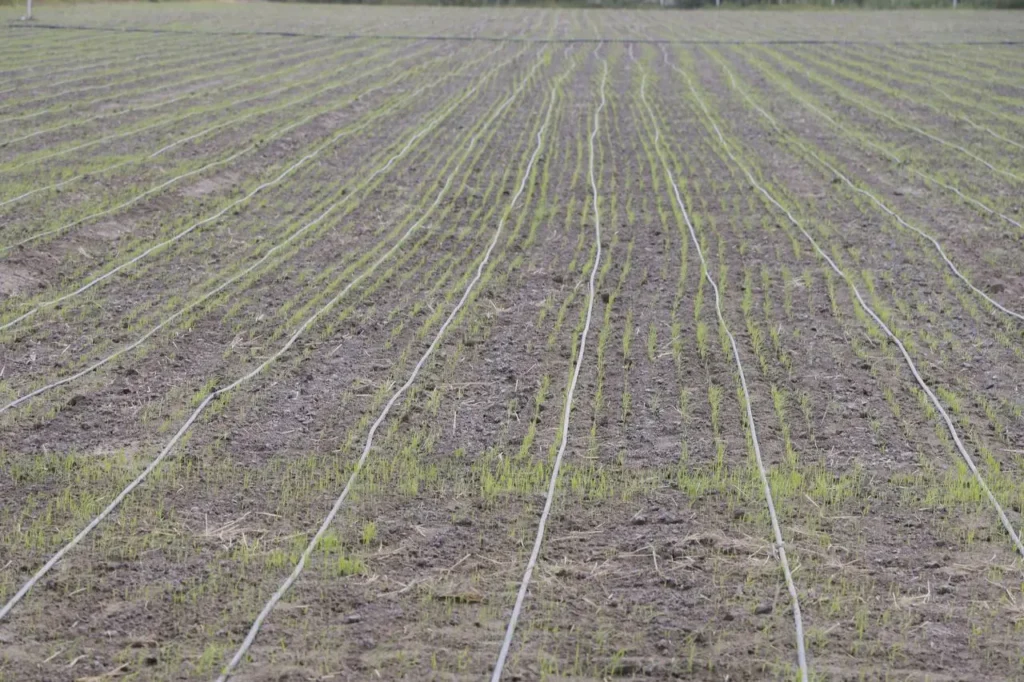Uzbekistan Plans Drip-Irrigated Rice in 6 Regions

Uzbekistan is set to introduce a new approach to rice farming in 2026, shifting away from traditional flood irrigation by piloting drip irrigation methods in six regions, lex.uz reports. As part of a broader strategy to conserve resources and modernise agriculture, the project will test more sustainable and climate-resilient practices.
The initiative will be rolled out in Karakalpakstan, and the Khorezm, Bukhara, Namangan, Syrdarya and Surkhandarya regions, where pilot plots of at least 10 hectares will be established. Main goal is to reduce water usage, increase yields and improve crop resilience under changing climate conditions.
Drip irrigation, which delivers water directly to plant roots, could halve the amount of water typically required for rice cultivation. This was demonstrated in a previous project in the Nukus district of Karakalpakstan, where the Ministry of Agriculture reported water savings of up to 50%. The ministries of agriculture and water resources have been tasked with assessing the effectiveness of this technology and will submit proposals by the end of the year. Project participants are expected to receive subsidies.
Focus on Innovation and Global Collaboration
The government has also committed to introducing new rice varieties that consume less water and withstand extreme temperatures. These will be developed with input from international experts, particularly through collaboration with South Korea’s KOPIA centre and the International Rice Research Institute (IRRI) in the Philippines.
Between 2025 and 2028, research will focus on marker-assisted selection to breed drought-resistant, high-yield hybrids. Uzbekistan will also partner with Egypt to develop heat-tolerant, water-efficient strains, and with Nepal to create cold-resistant varieties with strong productivity.
Planned varieties are expected to outperform existing ones by at least 10 to 15 quintals per hectare. These hybrids will be adapted for reduced water use—by up to 35% compared to flood irrigation—and must meet nutritional standards, including suitability for child nutrition and enhanced content of iron and zinc.
In parallel, the rice sector will begin transitioning to renewable energy, using solar power to operate energy-efficient pumps. Modern technologies for rice processing will also be trialled this year, with full-scale implementation expected from 2026.
Another shift involves growing rice from seedlings, rather than sowing seeds directly. This year, seedlings will be used on at least half of all double-cropped fields. To scale this method, local production of seedling trays and specialised equipment will begin.
Uzbekistan’s rice sector, traditionally reliant on high water volumes, is now entering a new phase shaped by innovation, international collaboration and an emphasis on sustainability.
Kursiv also reports that Uzbekistan’s Beshagro Eksport company signed a $10 mln export contract with European buyers.

